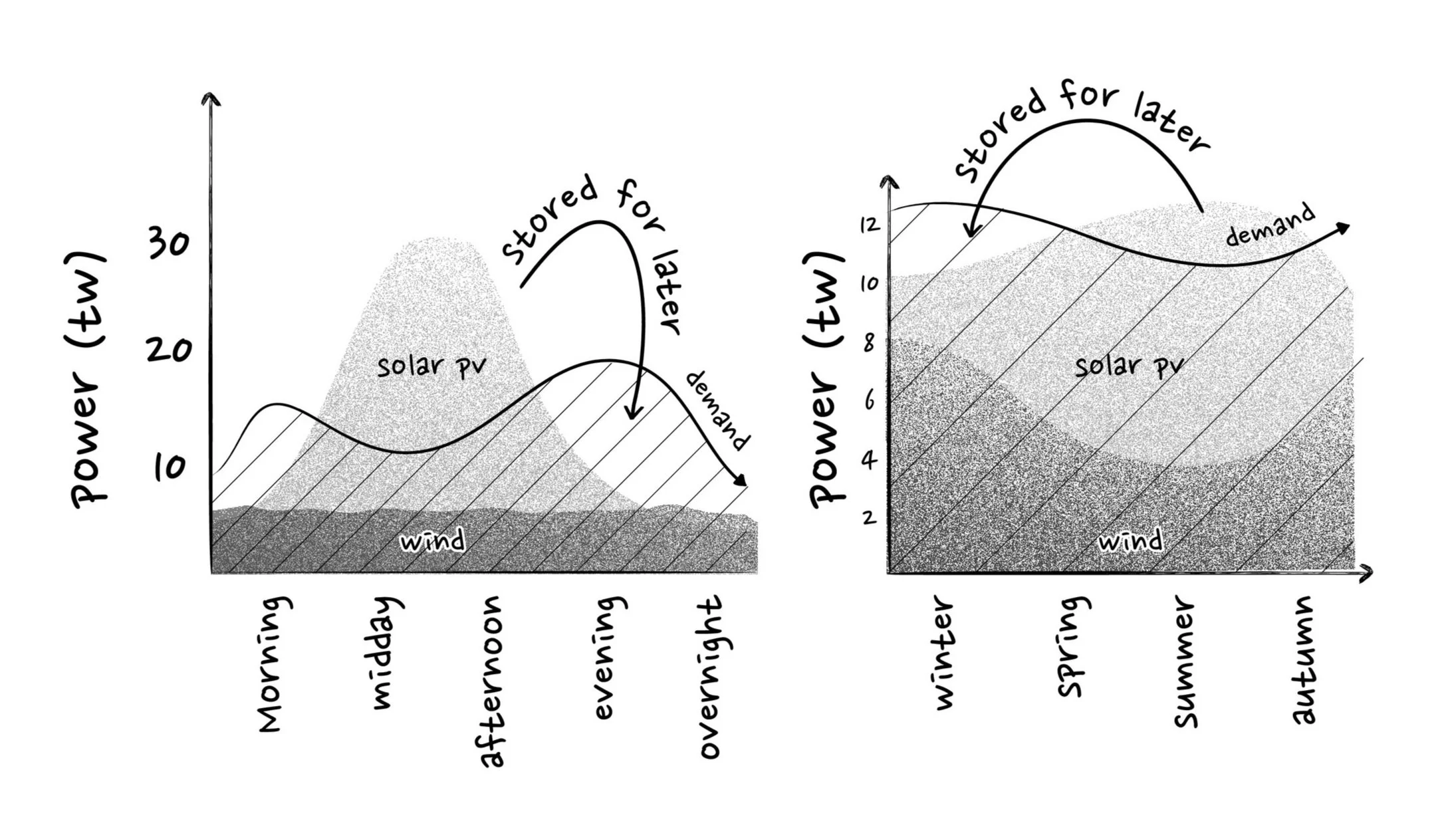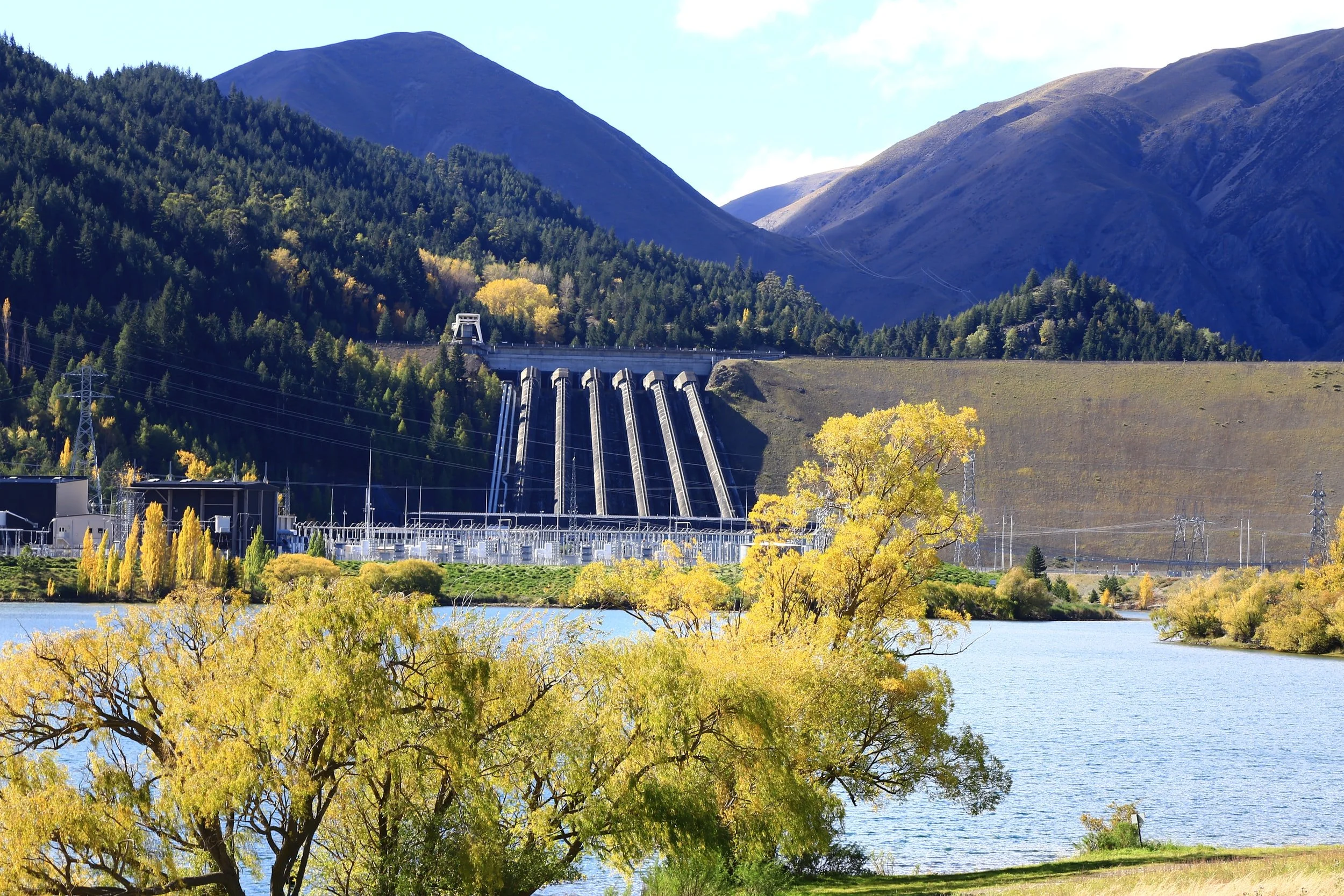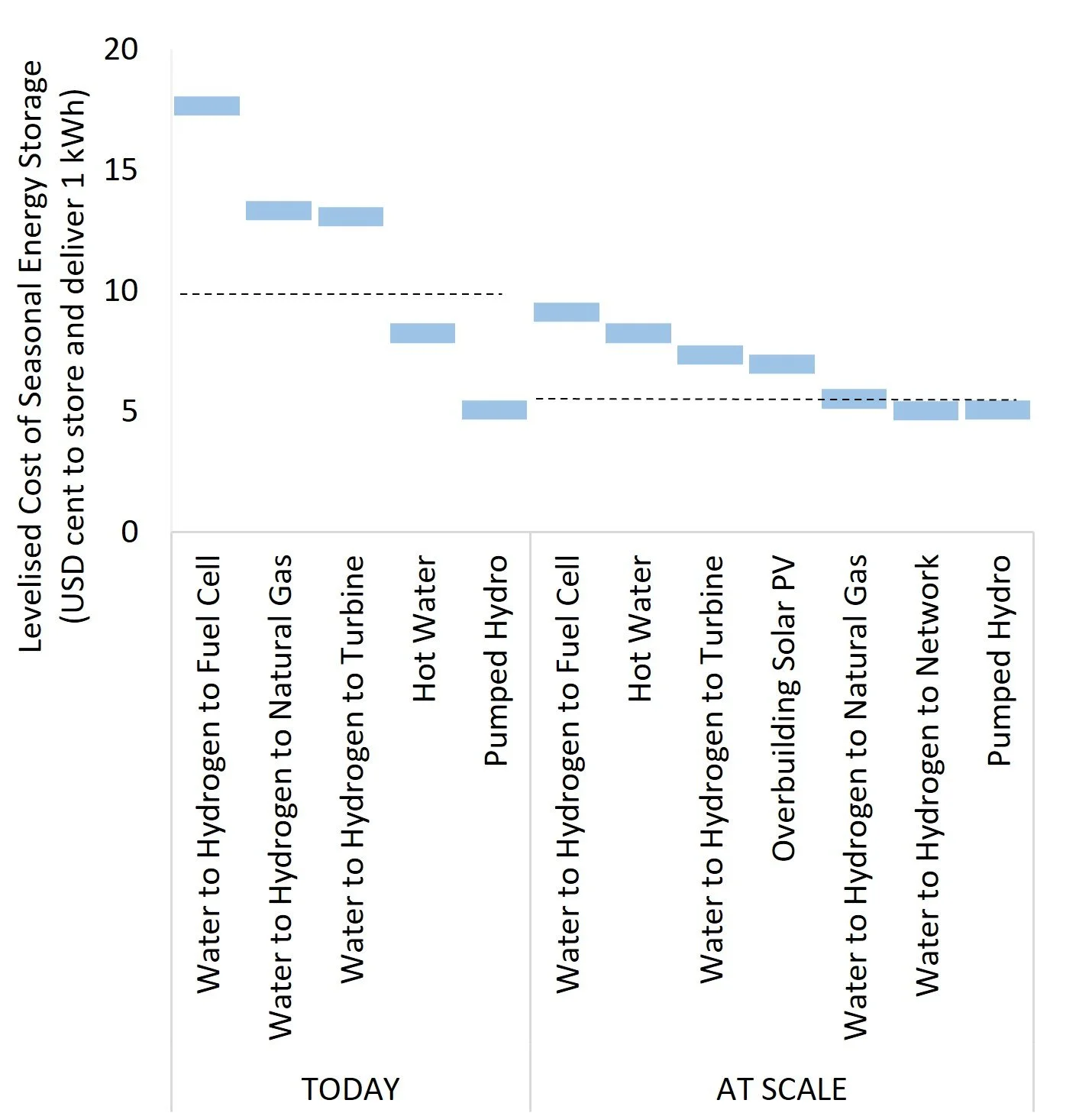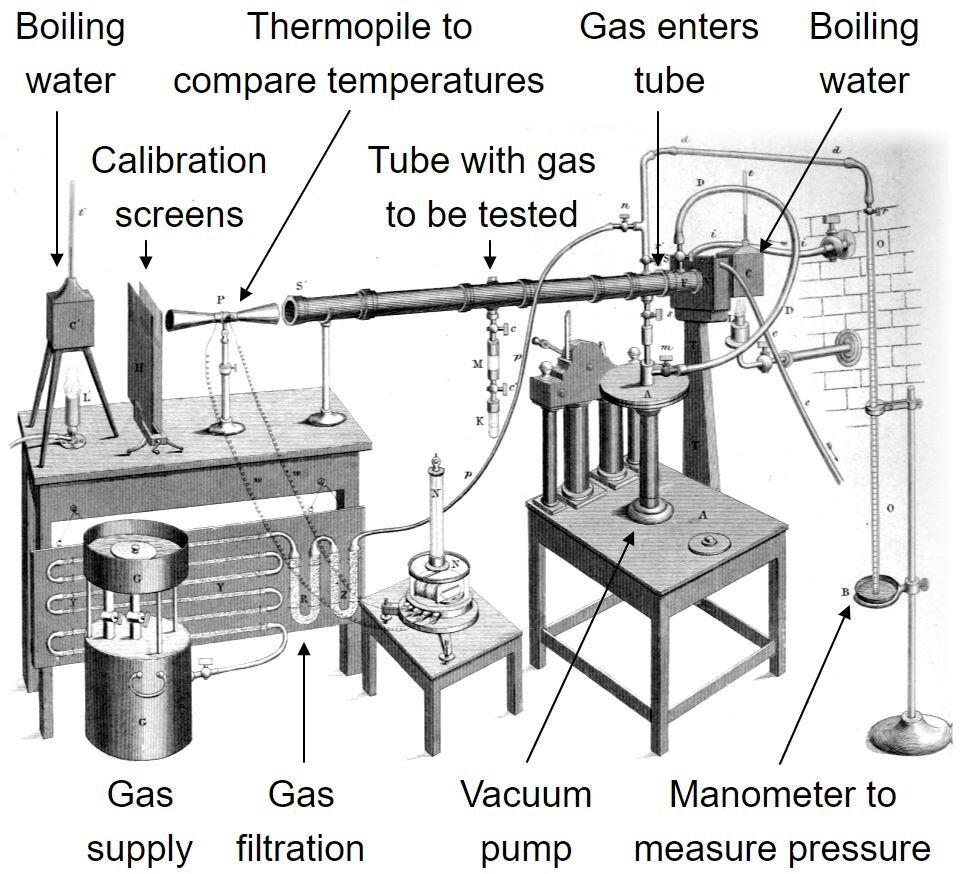Long-Term Energy Storage in a Net-Zero Future
In this post from NET-ZERO:
How do we ensure a reliable energy supply from wind and solar throughout the seasons of the year? The technologies which enable long-term energy storage from heat, to pumping water to manufacturing hydrogen.
What cost will long-term storage cost? The levelised cost of storing energy.
Short term or daily storage solutions solve intermittency of generation when using wind and solar electricity generation, but seasonal variability is another issue. Wind farms generate roughly double the output in winter compared to summer. Solar PV farms deliver roughly triple the output in summer compared to winter. Wind and solar can counter-balance one another through the seasons, but maybe not perfectly. In many regions there will be a mismatch between supply and demand through the year. In a 50:50 wind:solar system operating in an average country in the Northern Hemisphere, the total seasonal mismatch adds up to about 4% of total annual energy demand. This seasonal energy imbalance must be stored in summer and reused in winter.
Solutions for Seasonal Energy Storage: Physical Properties and Economic Costs
Longer term storage solutions require technologies suited to monthly or annual charge and discharge cycles which places a significantly different set of constraints on our technology choices when compared to short term storage.
Low energy leakage becomes critically important given the longer duration; plus seasonal storage requires de-coupled power and storage solutions with extremely cheap storage. De-coupled power and storage provides the ability to scale up storage capacity whilst holding the cost of the power equipment steady – this is especially important for the economics of seasonal storage which requires a high storage to power ratio.
Given these requirements, we can rule out several technologies straight away. Flywheels leak too much energy. Batteries have combined power and storage so become way too expensive when only used once per year and there are not enough storage caverns in the world to use compressed air.
That leaves thermal, pumped hydro and hydrogen:
Thermal heating of water (or other mediums) using cheap scaled up solar PV electricity in summer ($2c per kWh) and re-using the energy for low grade heating in winter can be accomplished with efficiencies of 50% if stored in large enough volumes and well insulated. Residential and commercial space and water heating accounts for 15% of final energy use (15 trillion kWh per year) which is significantly more than the 4 trillion kWh seasonal storage imbalance in a global 100% wind:solar system.
The infrastructure required to deliver the energy to buildings will add to the cost and may ultimately limit uptake. But thermal energy storage is a low-cost, low-risk, seasonal storage solution for heating which could definitely play a large role in correcting our seasonal energy generation imbalance.
Pumped hydro can also be used for seasonal storage. Nearly all the costs involved in building a pumped hydro facility are in the power generation end, including the dam, tunnel system, and generator. The cost of preparing the reservoir is comparatively small given the right location. J. Hunt et al. estimate there are up to 17 trillion kWh worth of potential locations which could cost less than $5c per kWh for seasonal stored energy – four times our seasonal storage needs.
Hydrogen ecosystems are the final part of our seasonal storage solution. Hydrogen has an extremely high specific energy and a good energy density; you can store lots of energy per kg or cubic metre of compressed gas. This makes seasonal storage cheap and it means hydrogen is an extremely useful form of energy for certain transportation and industrial applications.
Using cheap solar electricity, the cost of green hydrogen using electrolysis works out at around $7c per kWh today and potentially $5c per kWh once the hydrogen technology is scaled and optimised.
However, if you turn hydrogen back to electricity you add the costs and inefficiencies of a fuel cell or modified gas turbine which doubles the cost to more than $10 per kWh (double the price of today’s fossil fuel generation). Using hydrogen as a replacement in the natural gas network is possible but compared to the use of heat pumps for heating, hydrogen requires around 6x greater renewable electricity generation and will cost ~50% more to buy & run per unit of heat.
So, hydrogen use is best left for hard-to-abate decarbonization solutions where the engineering or economics of direct electrification don’t stack up. These are use-cases such as mid-haul flying, very-long distance trucking, fertiliser production, or certain chemical reactions.
Summary
Seasonal storage in a Net-Zero future will likely be a mix of thermal, pumped hydro, and hydrogen serving heat, electricity, transport and industrial needs, all helping to balance seasonal variation in renewables and supporting short term storage during extended poor weather conditions. The levelised cost range is large today but should trend towards $5-10c per kWh once the technologies are fully scaled. Whilst more expensive than short term storage, energy products like hydrogen add significant value in replacing oil or gas-based products in certain transport or industrial uses and could act as last resort source of electricity generation using cheap open-cycle gas turbines for back-up power.


































